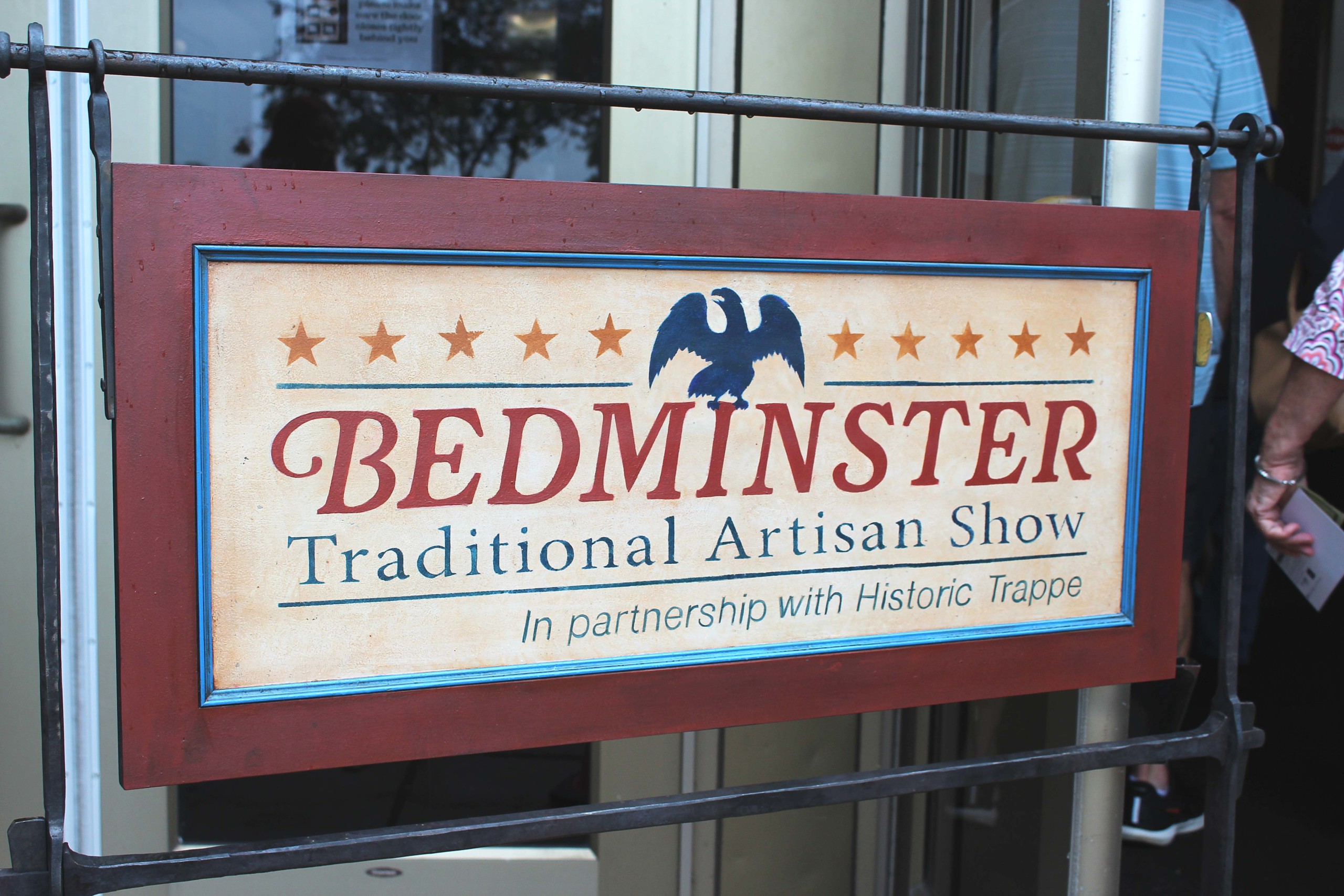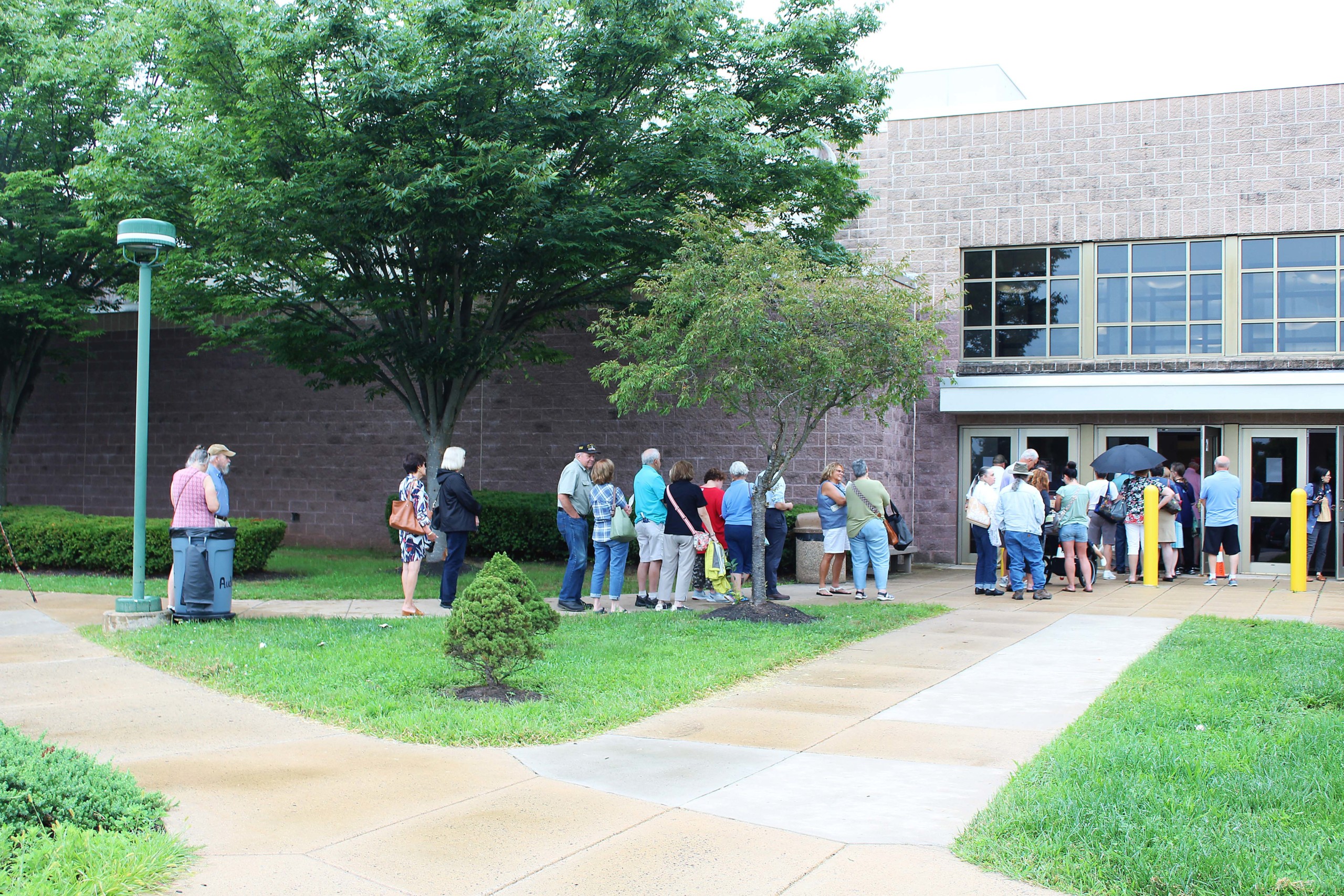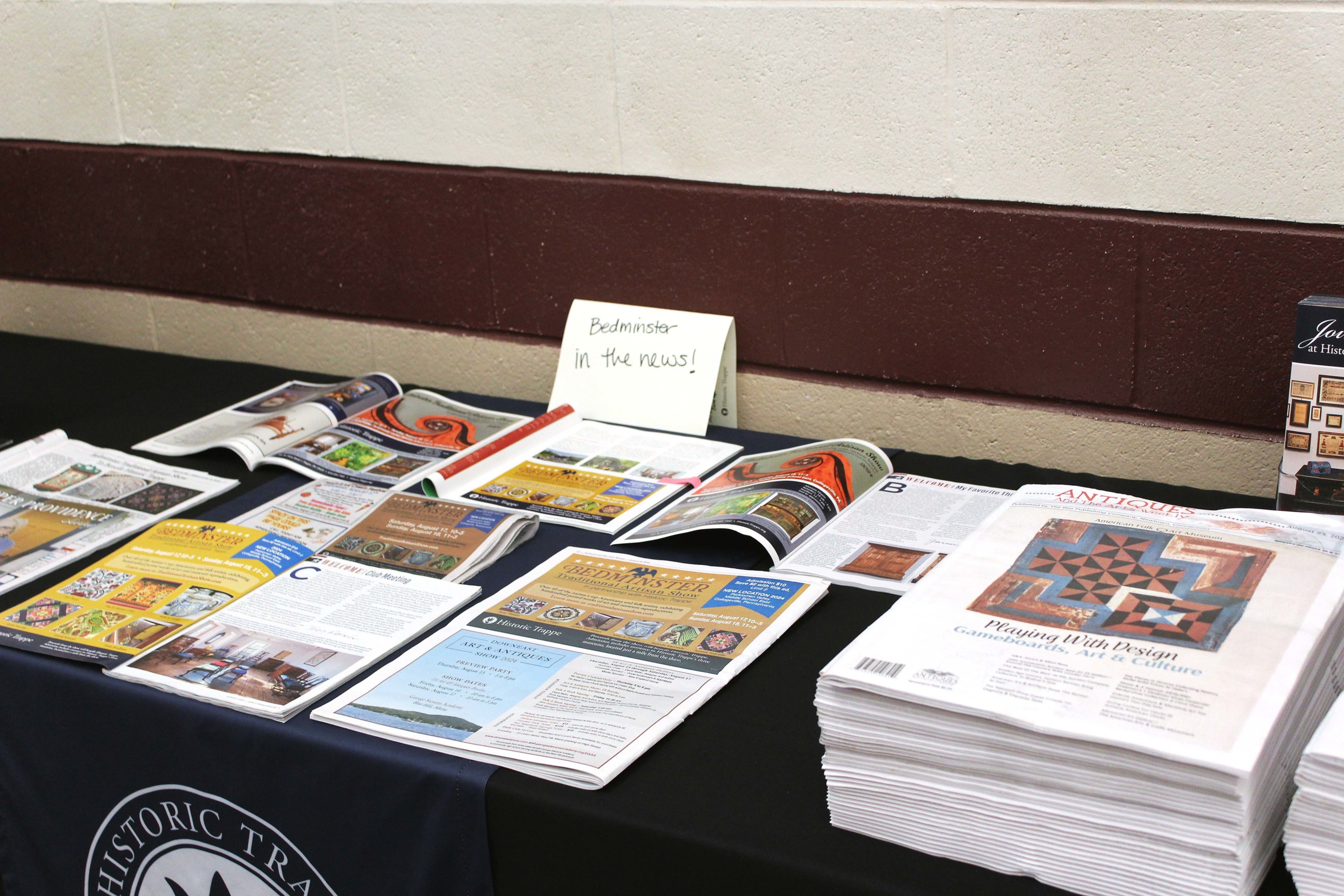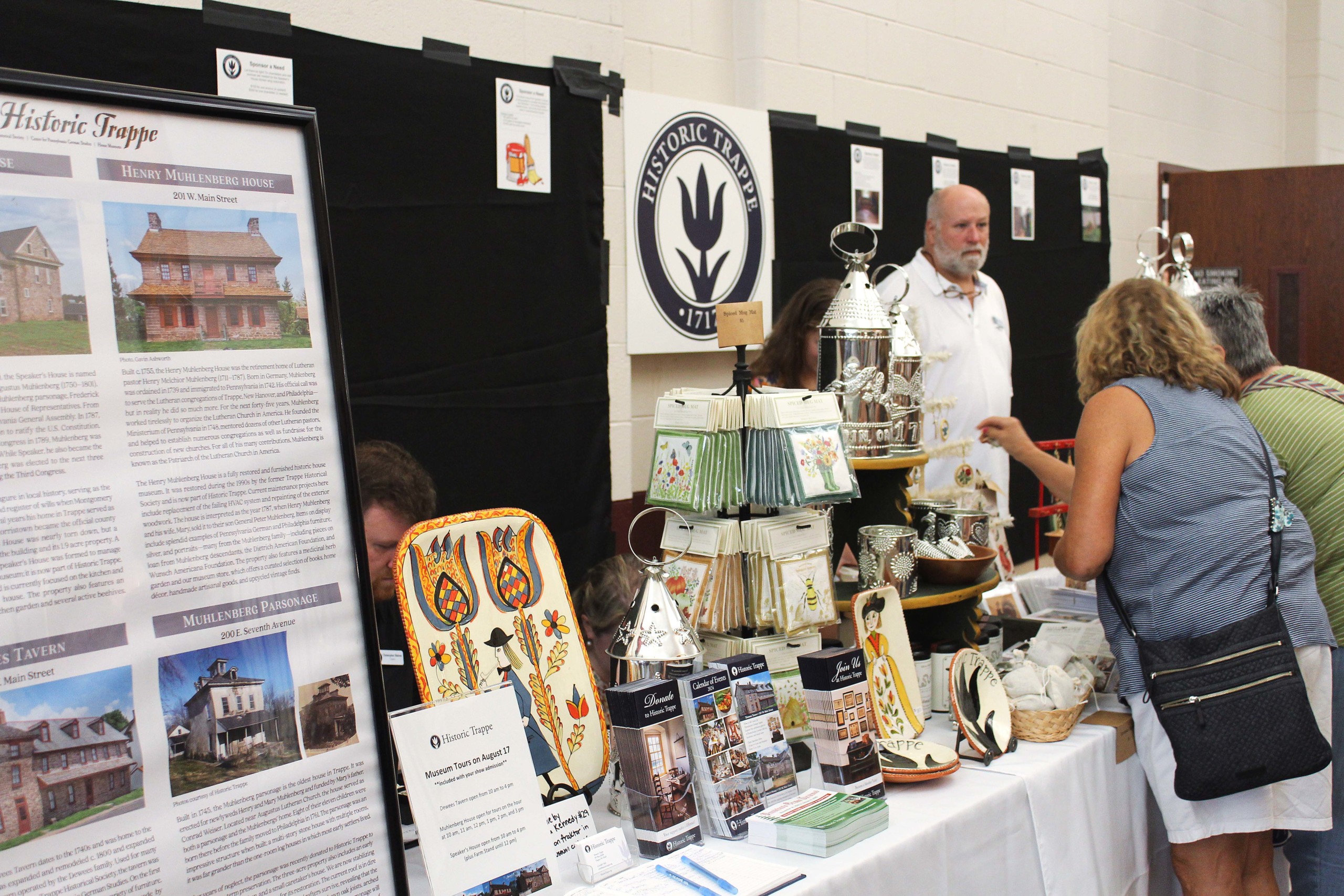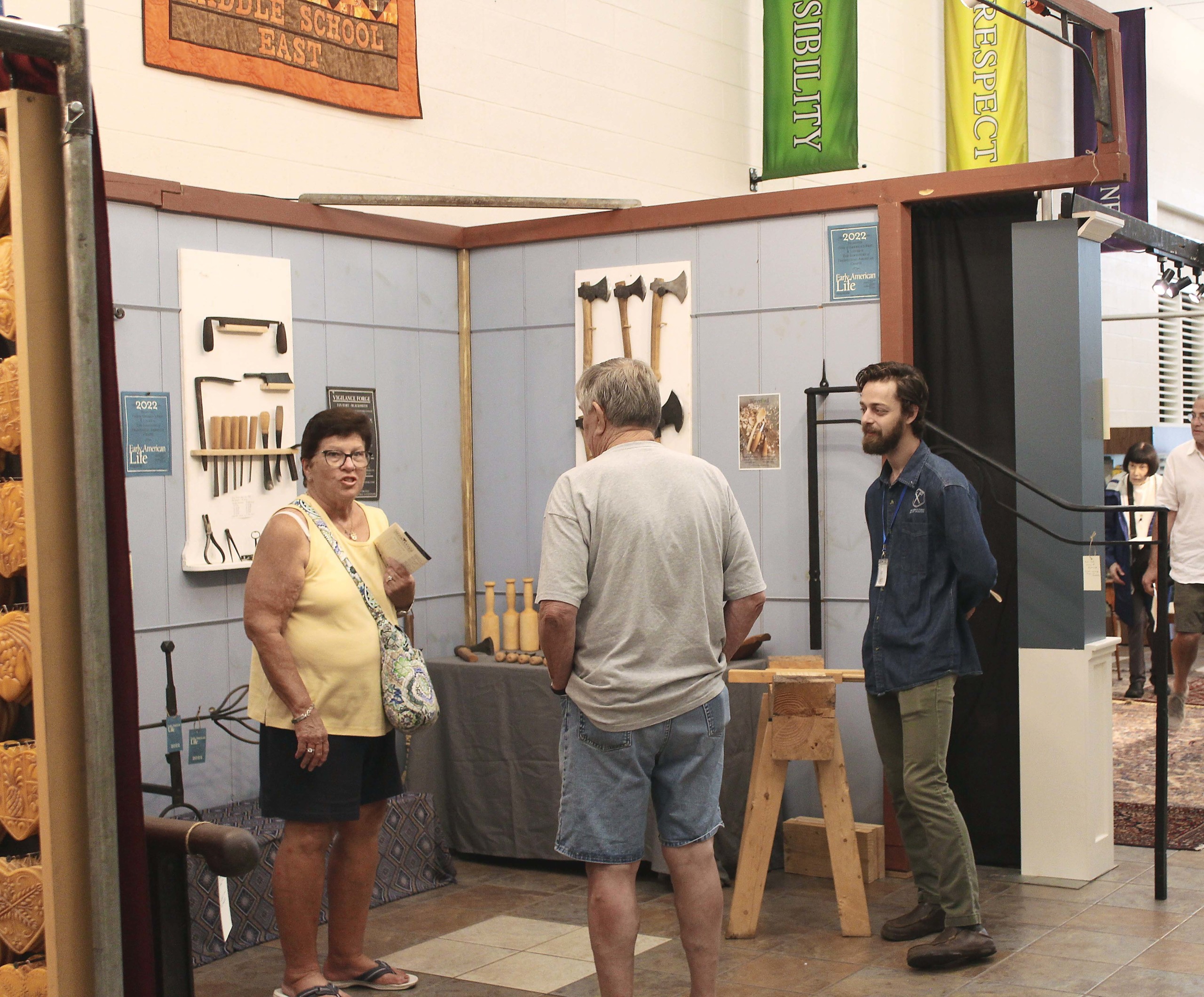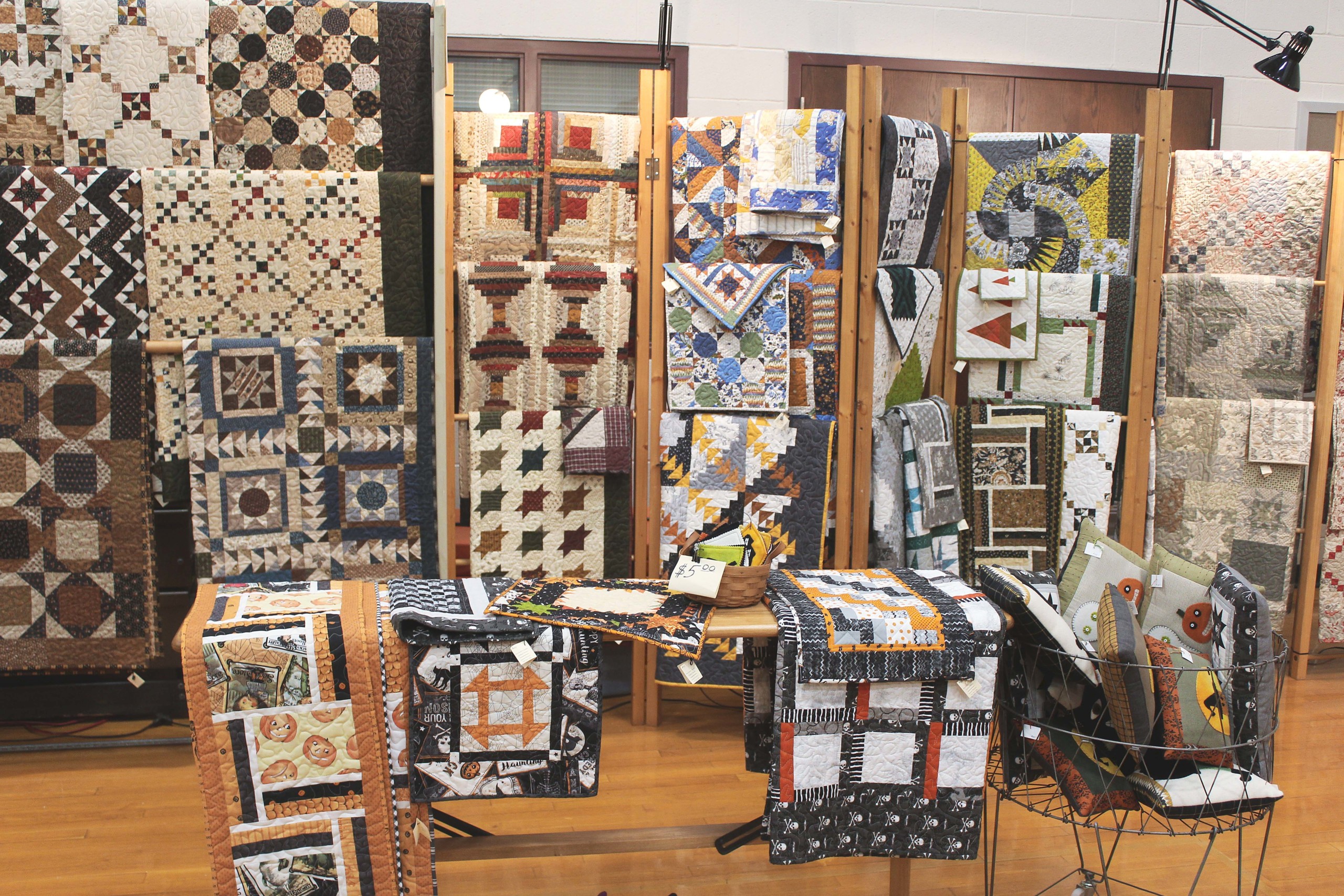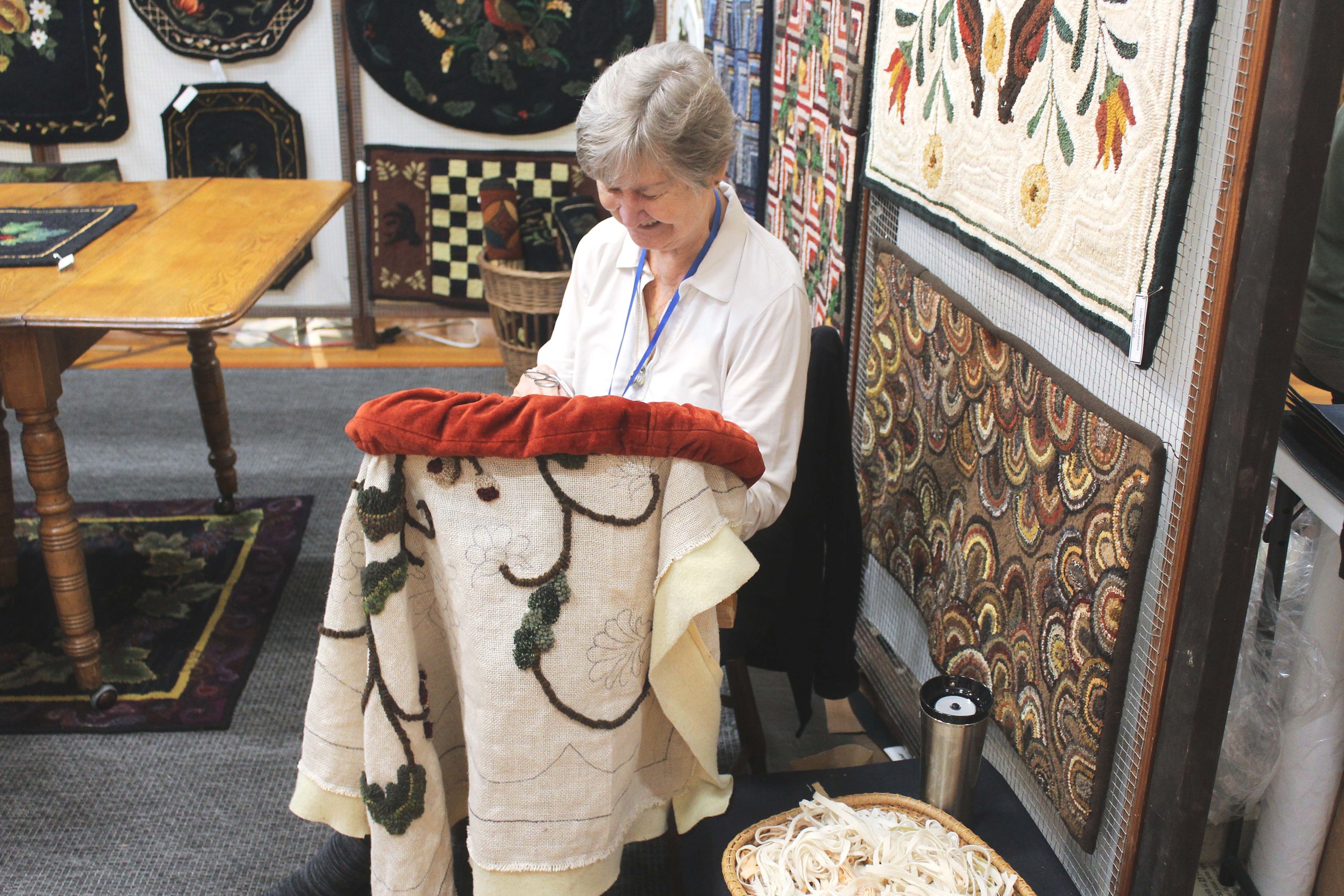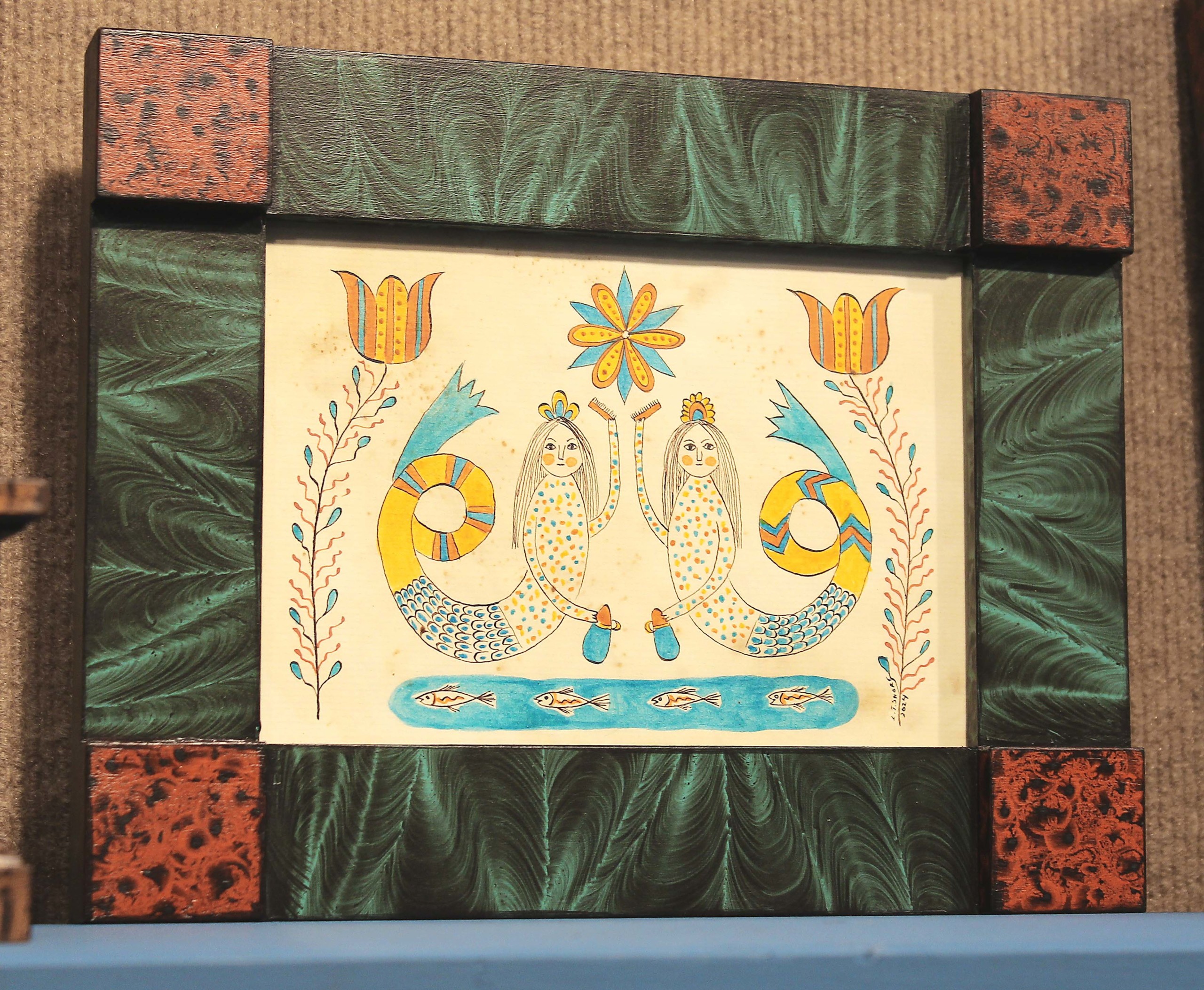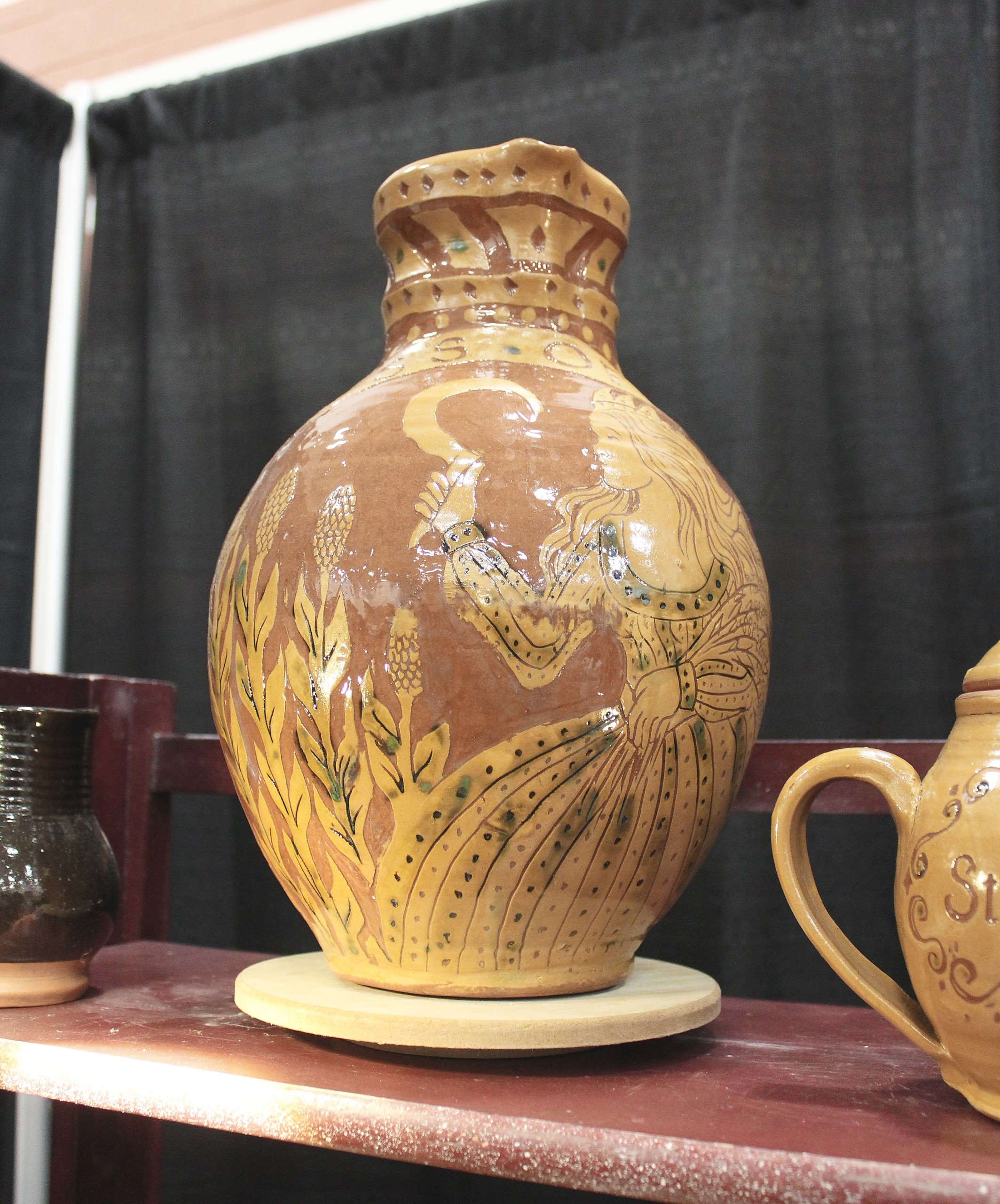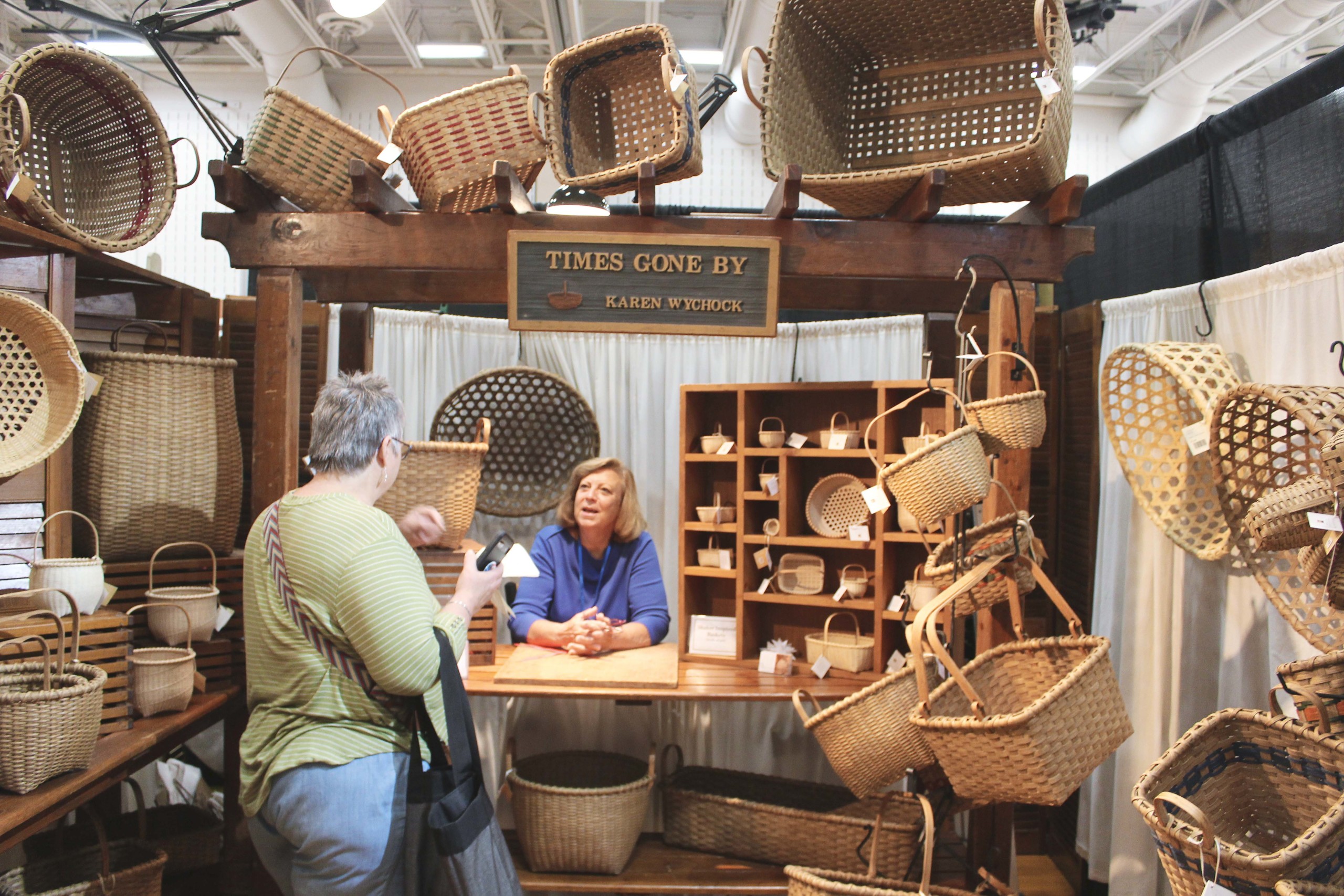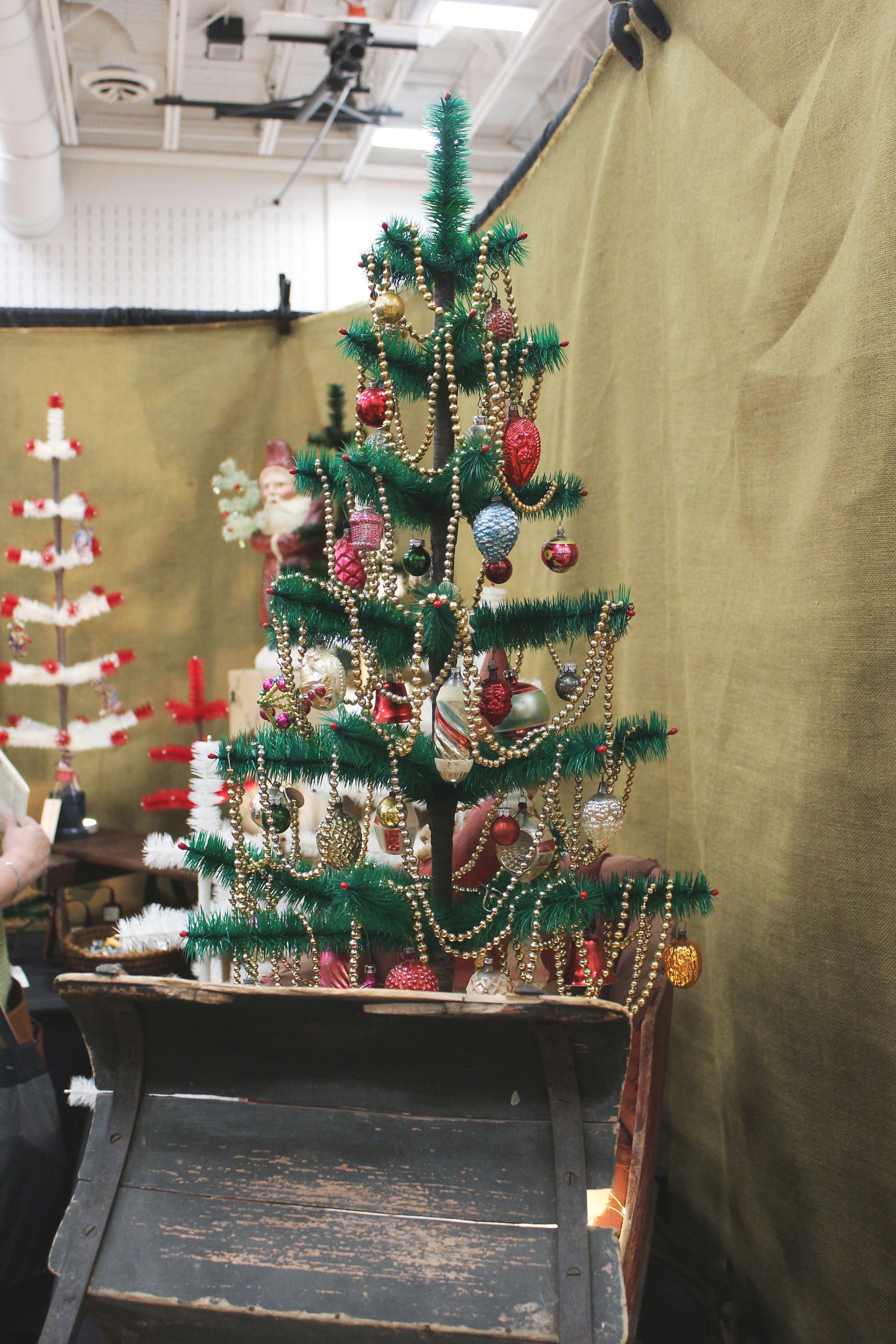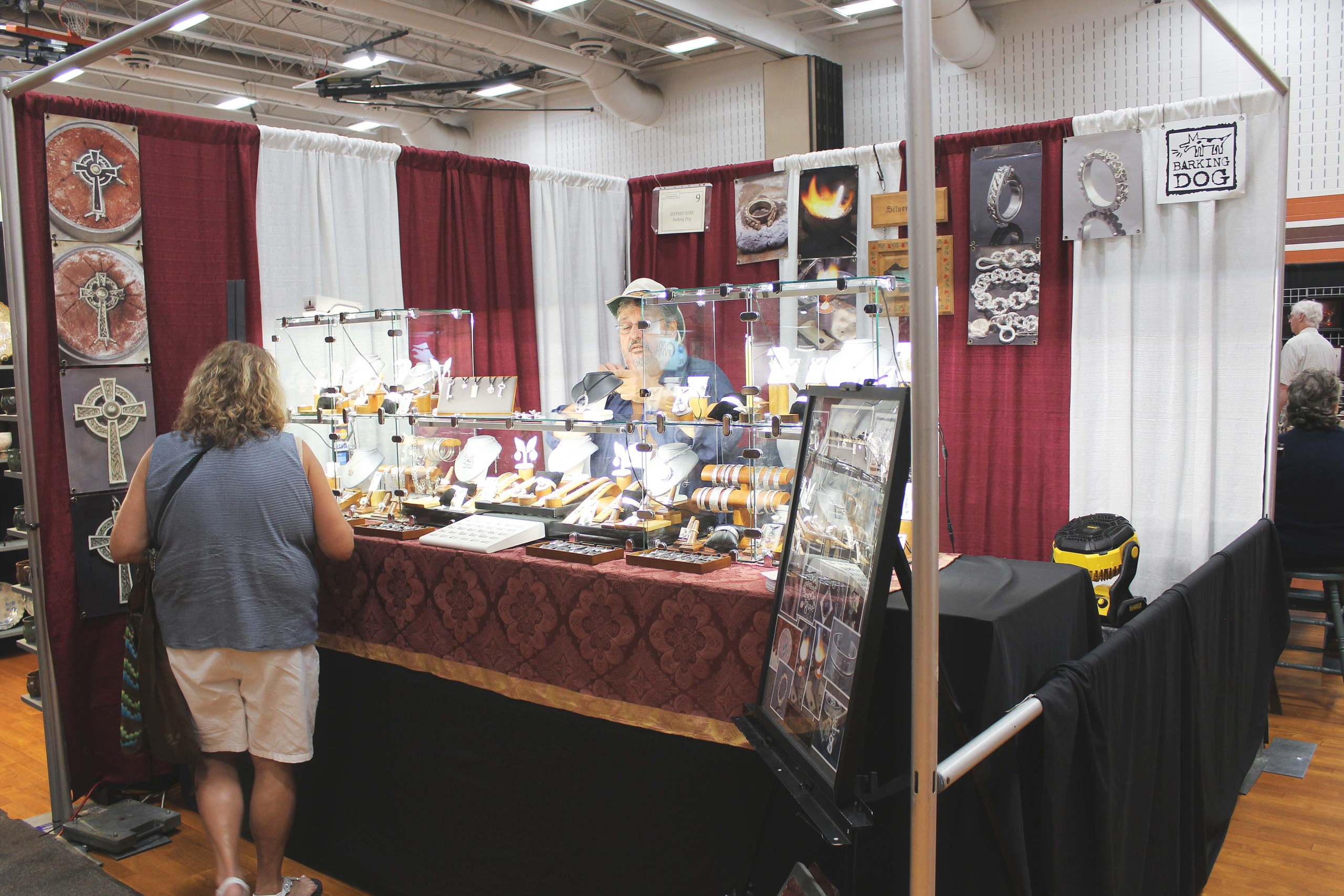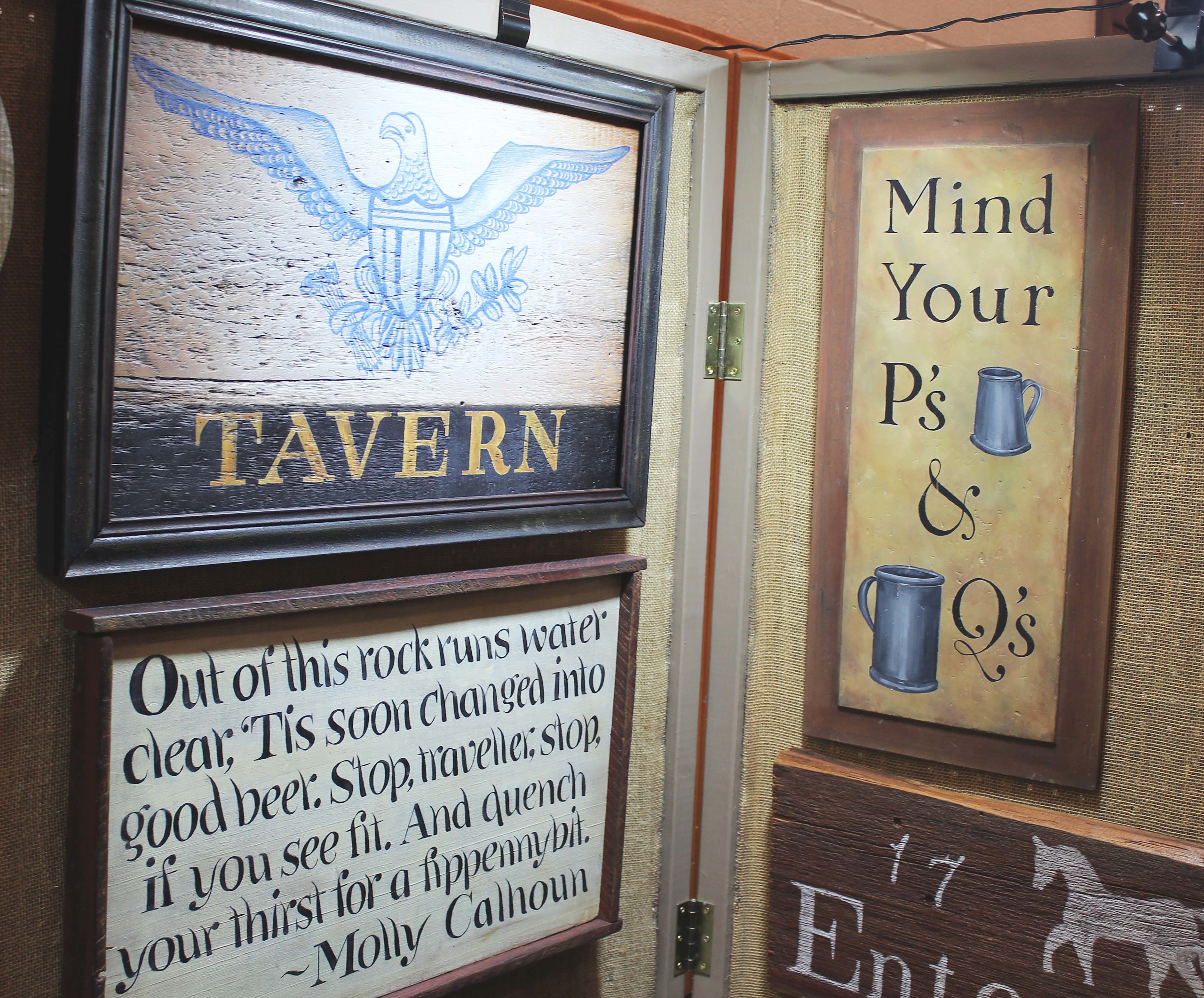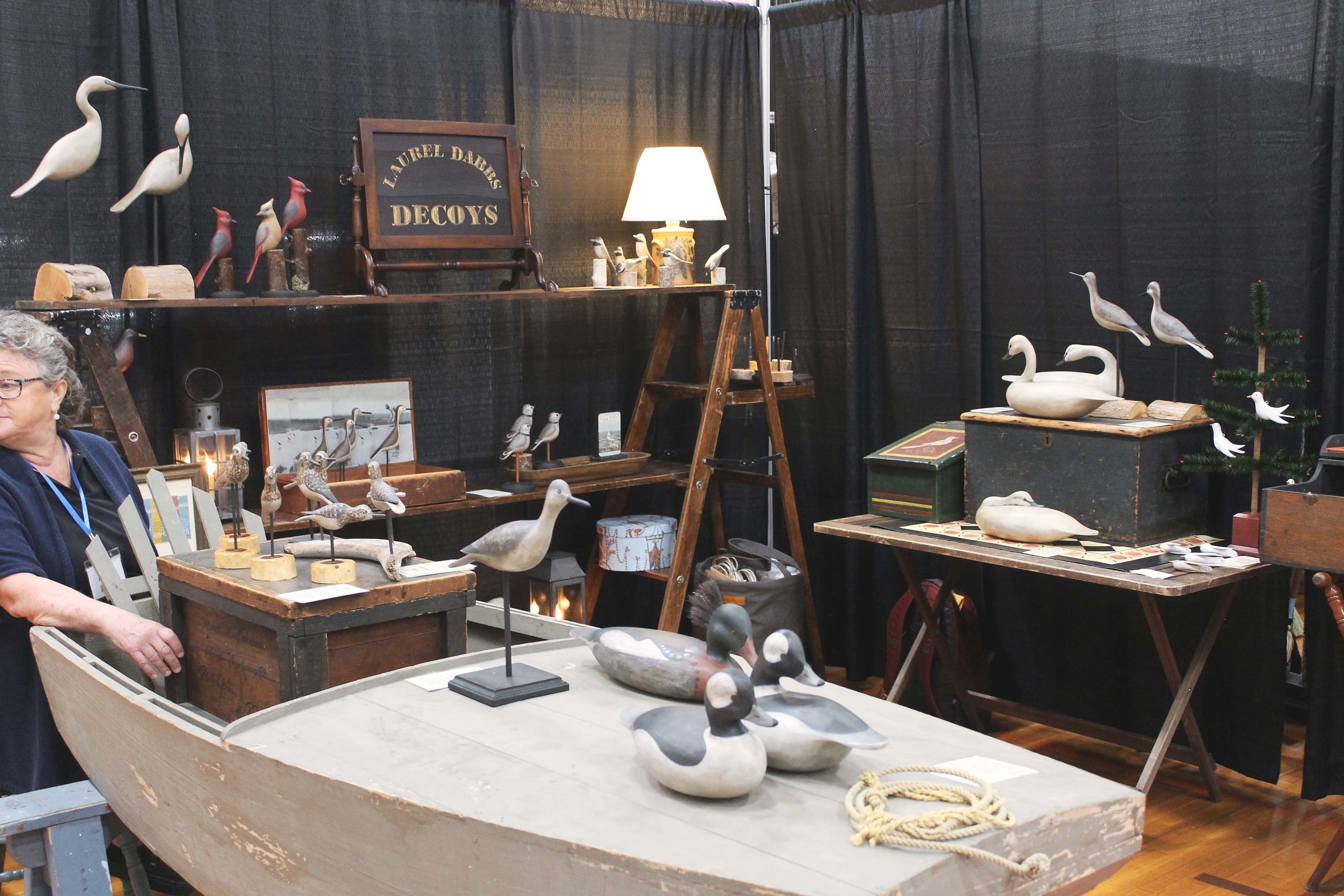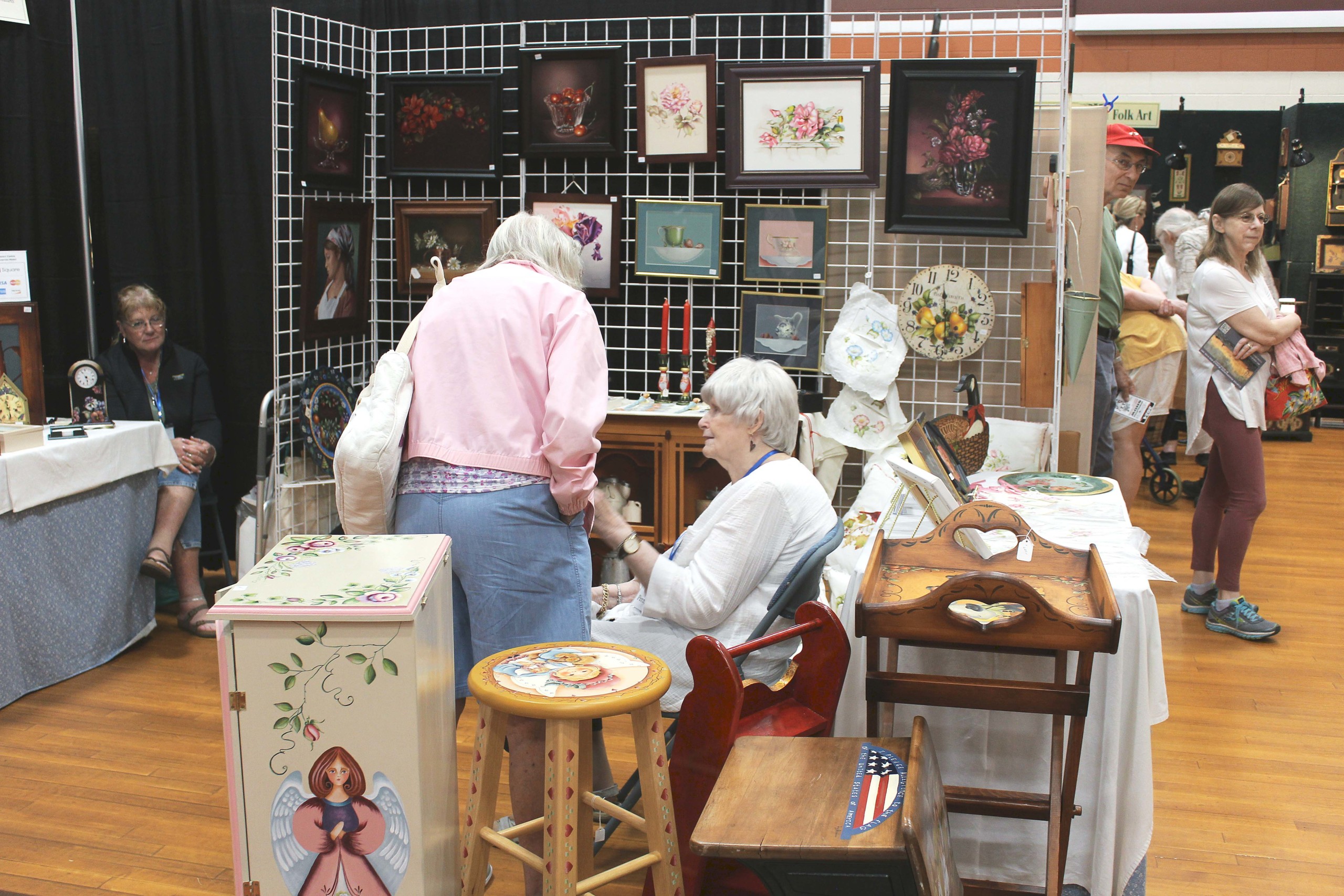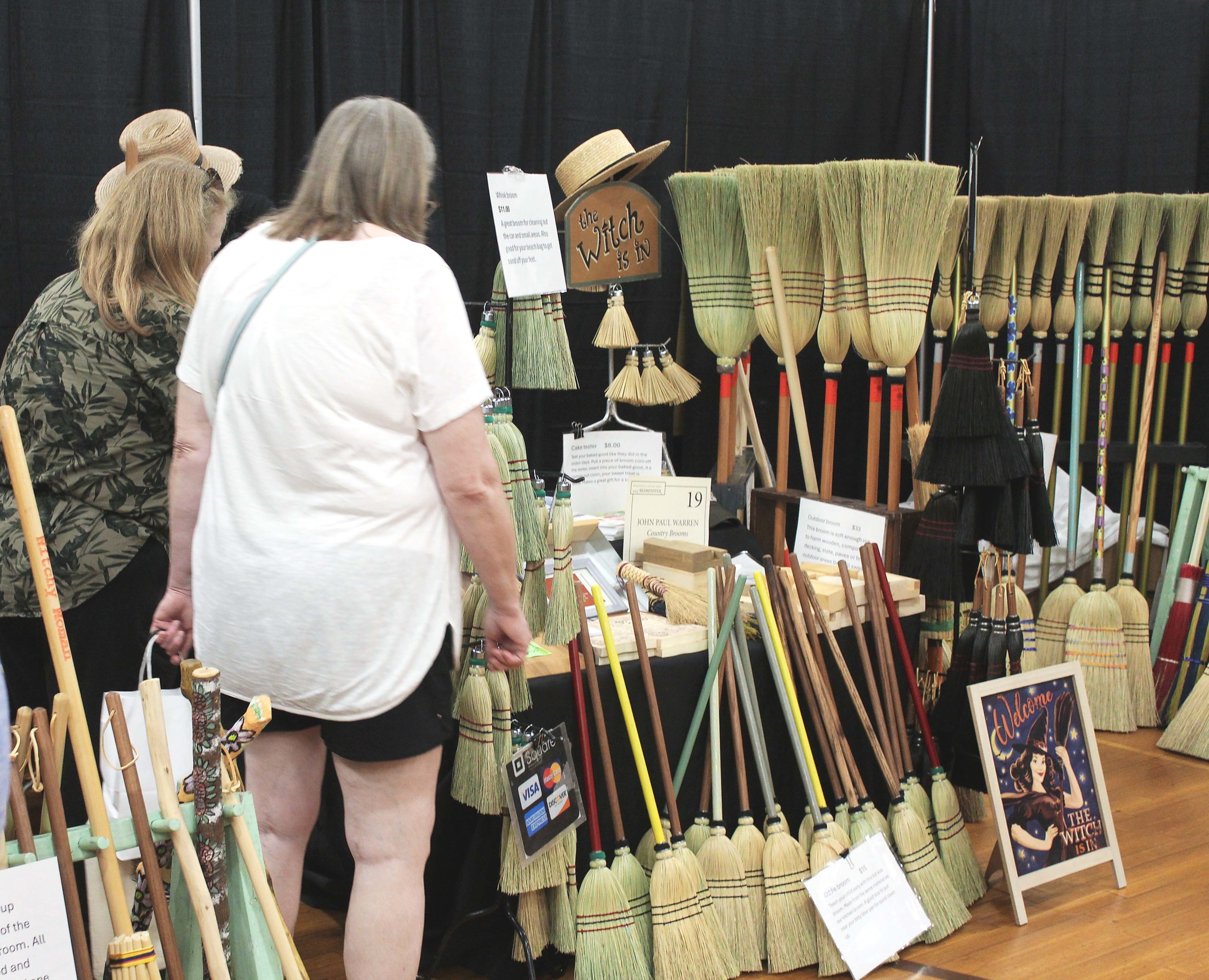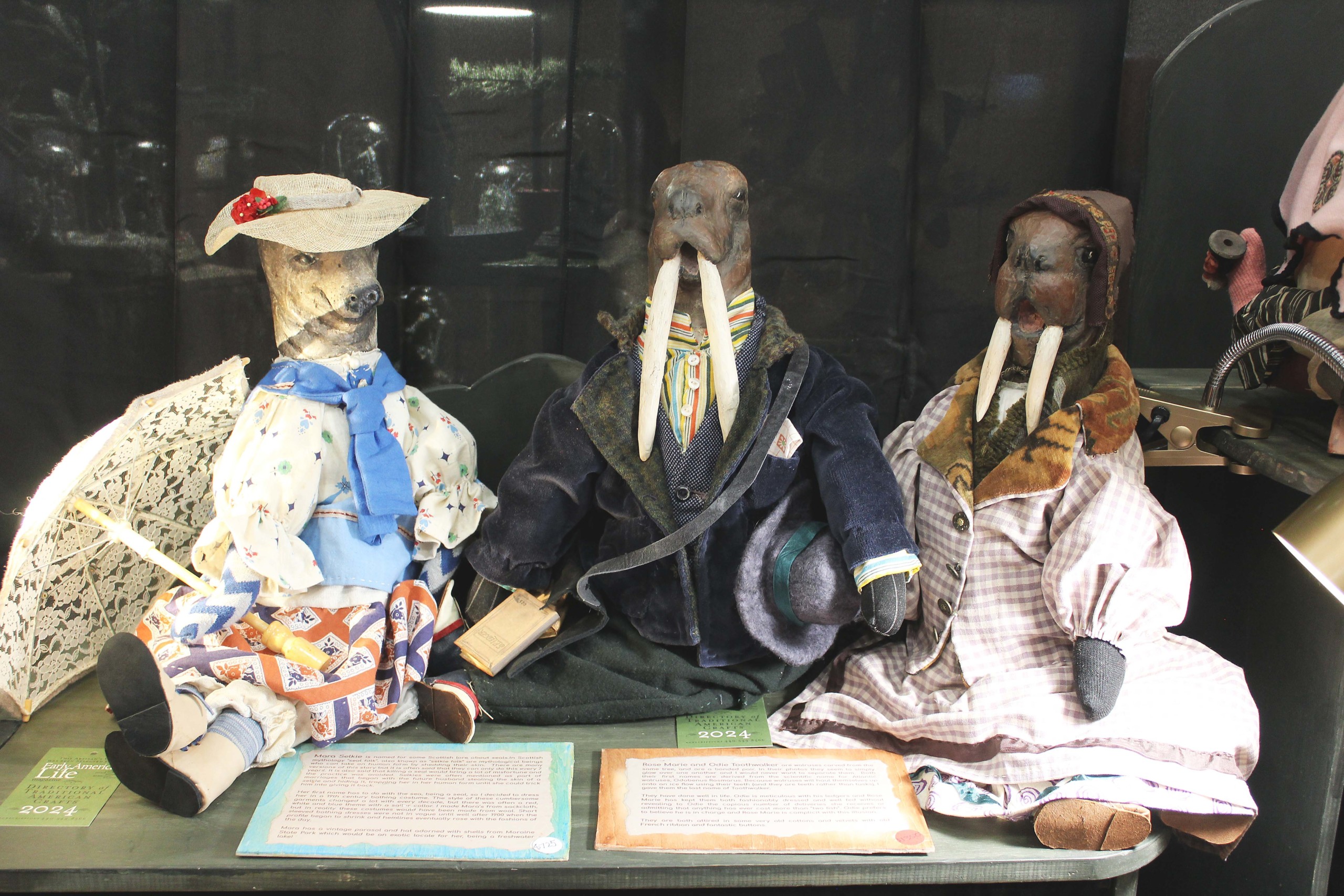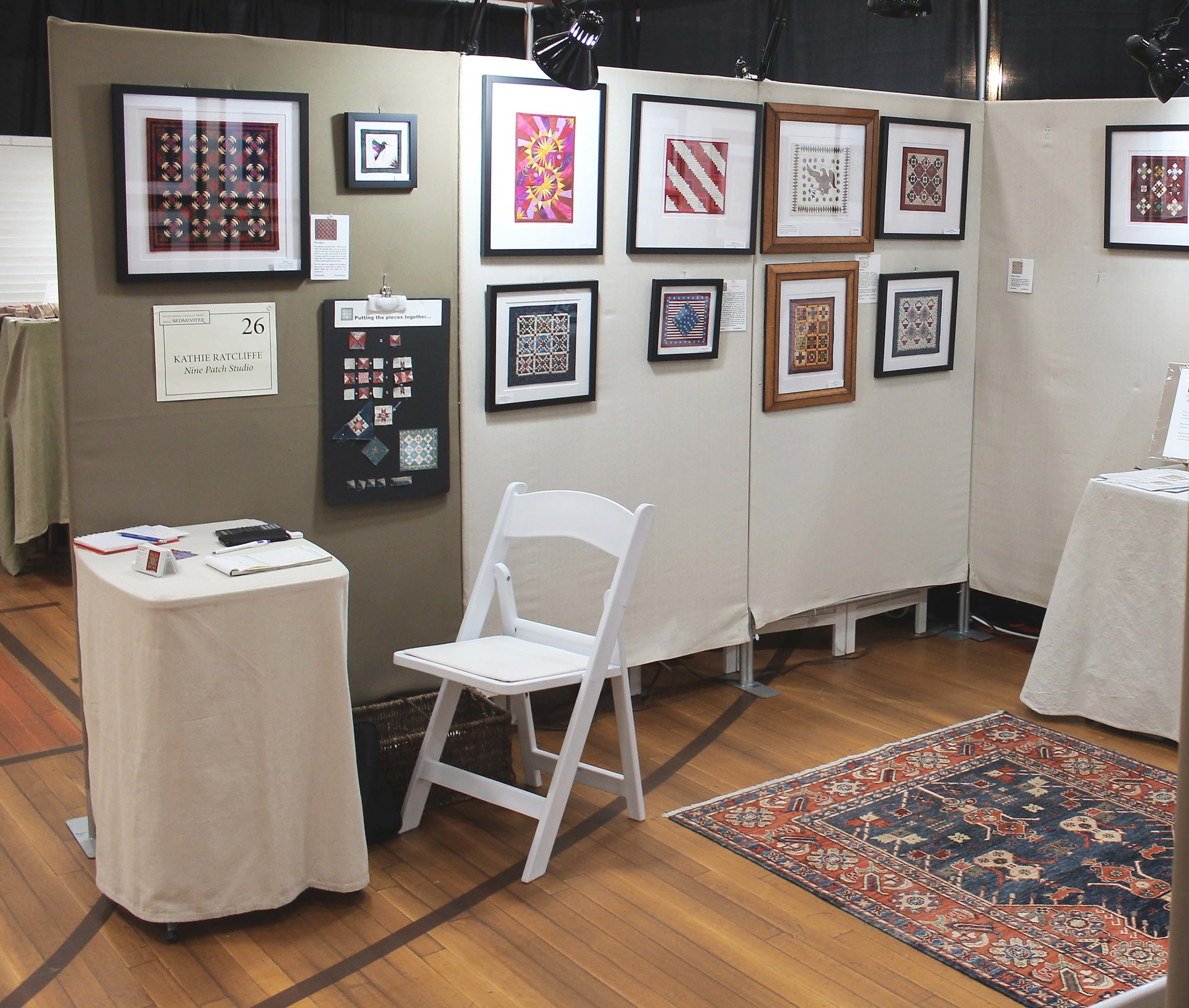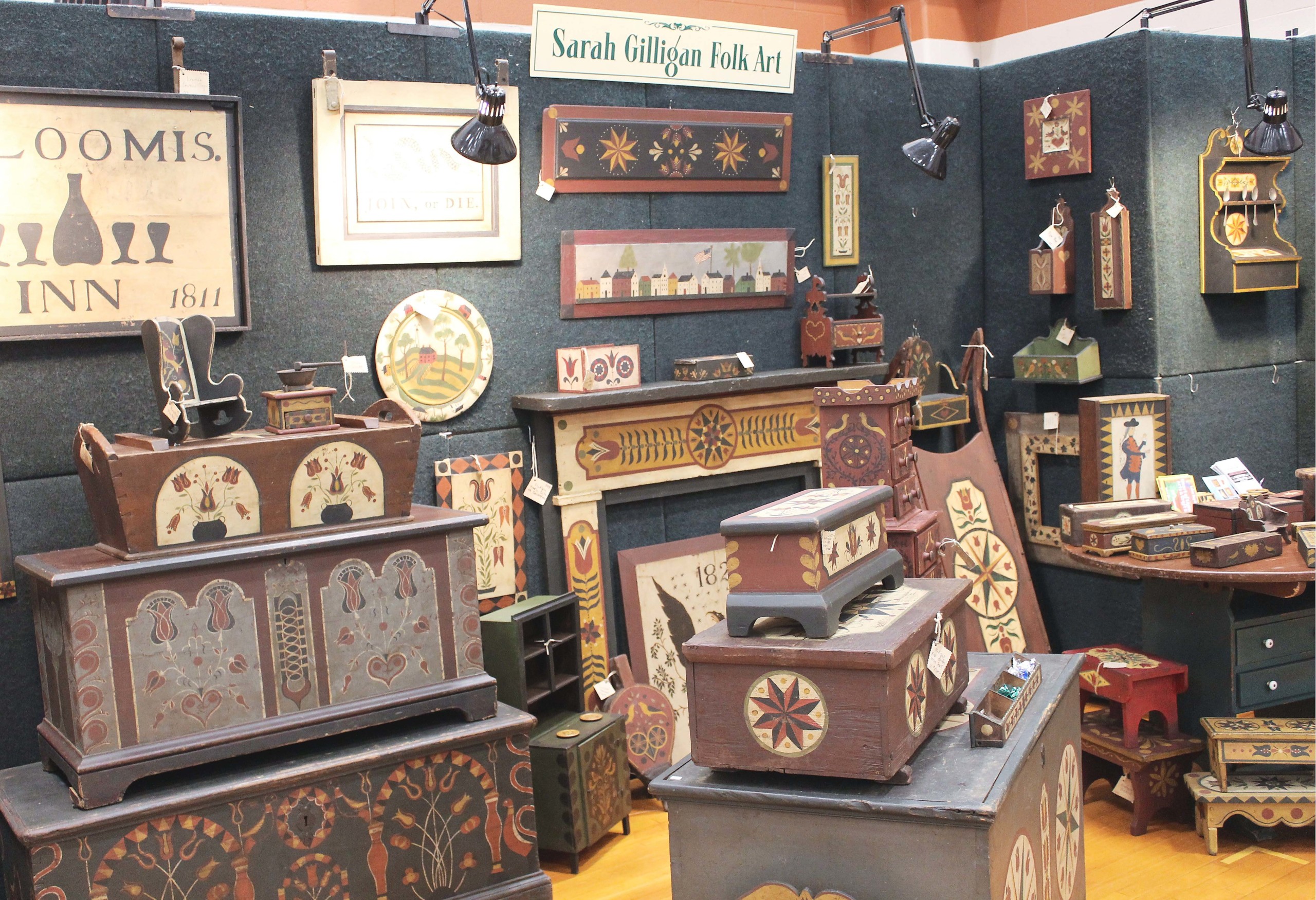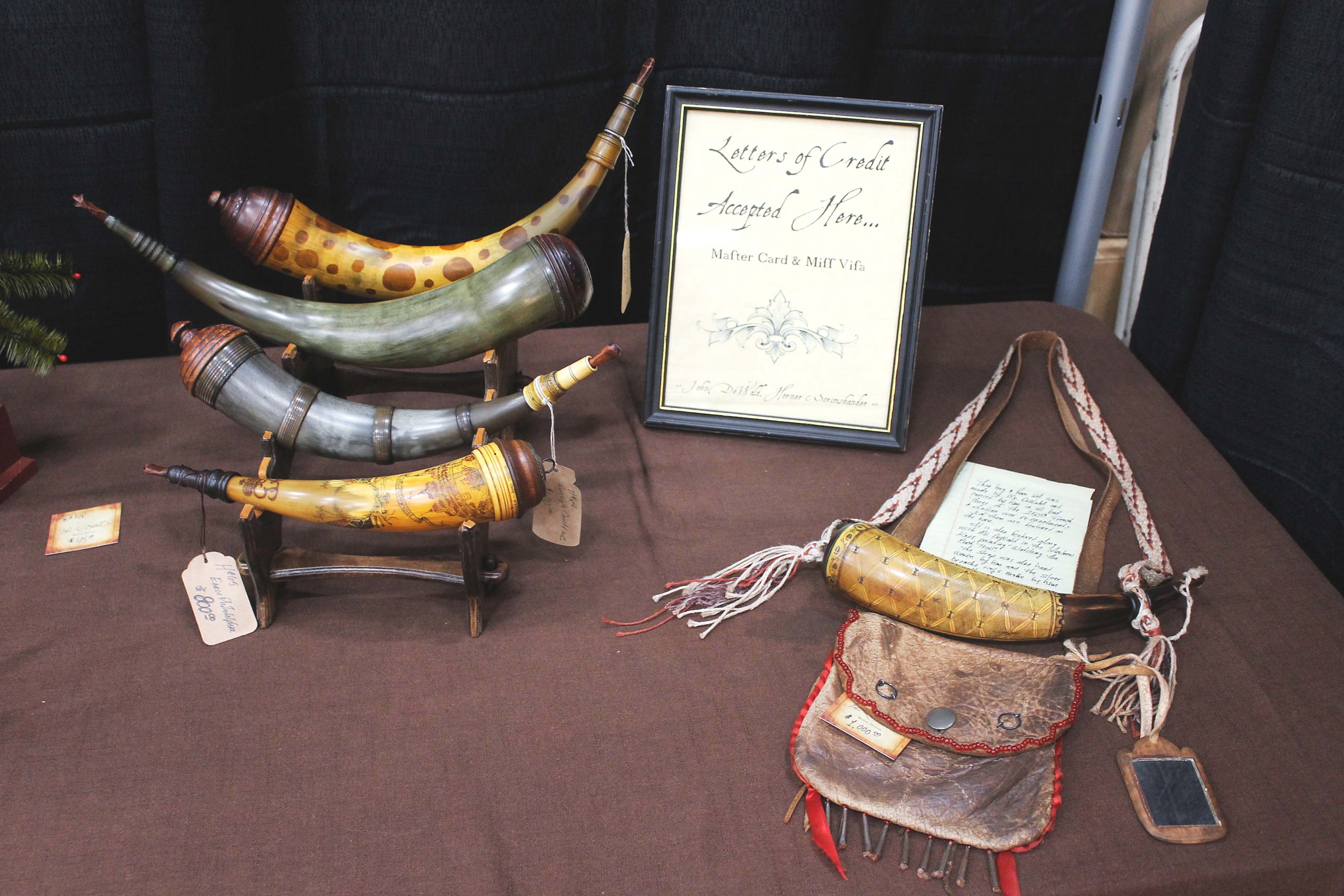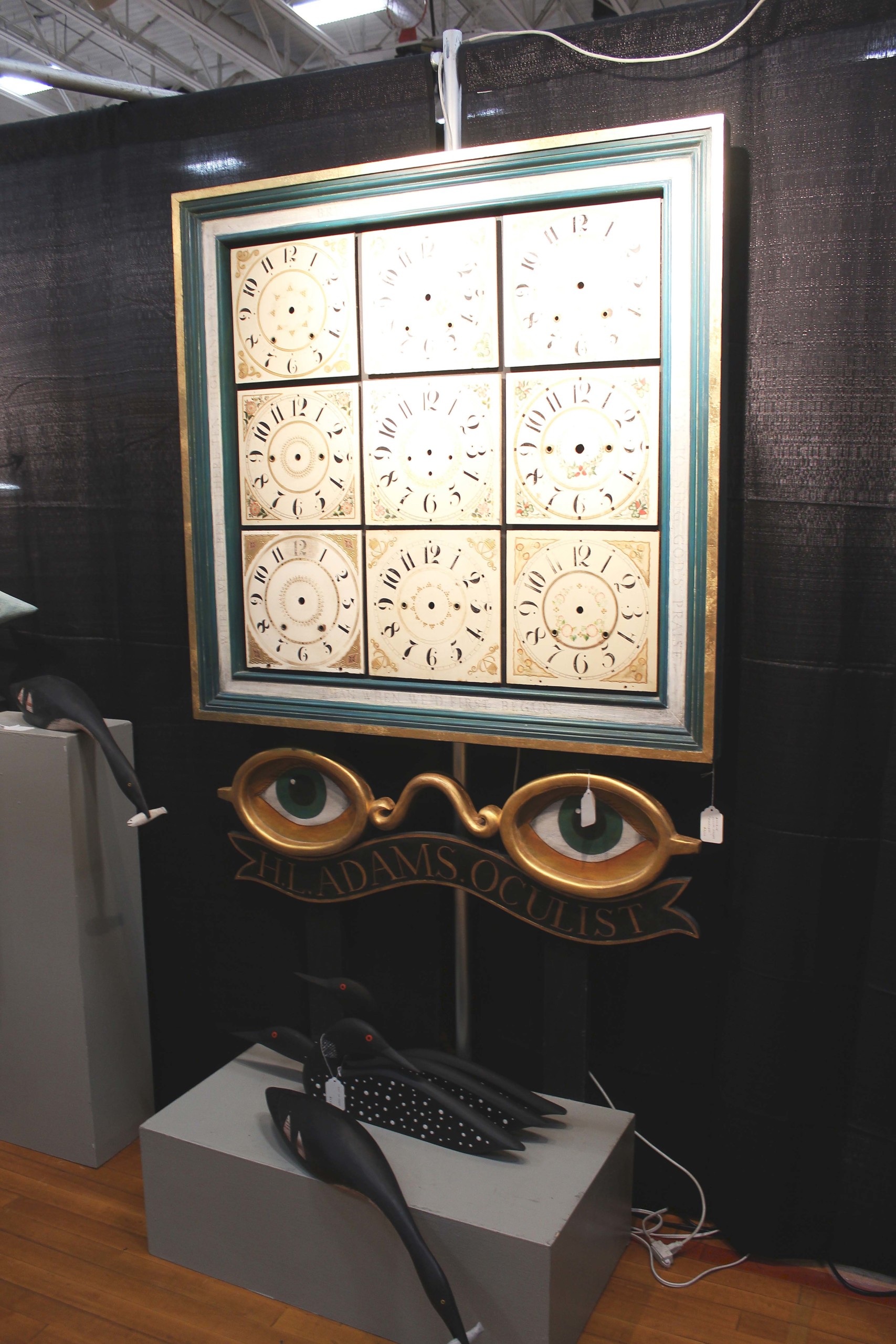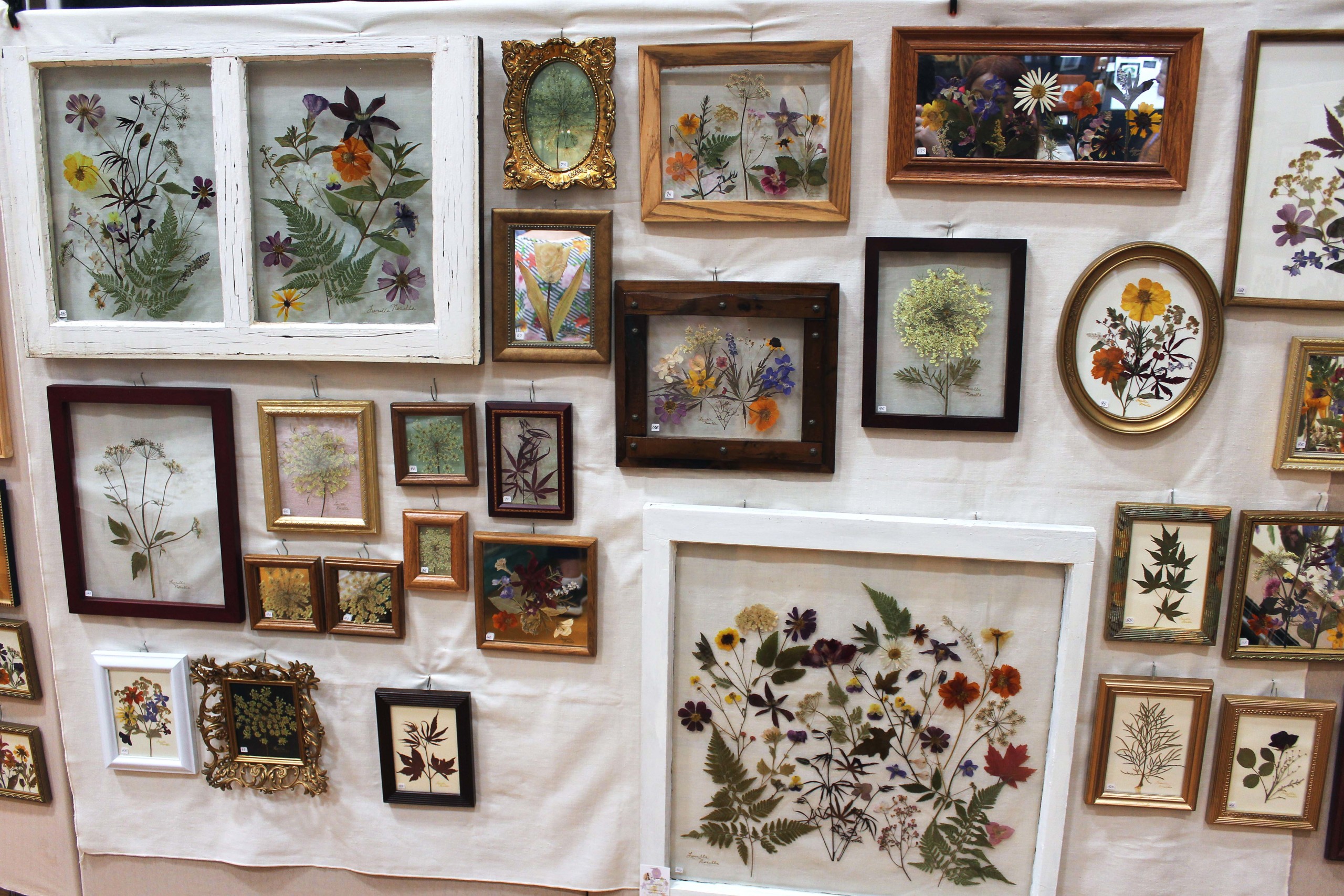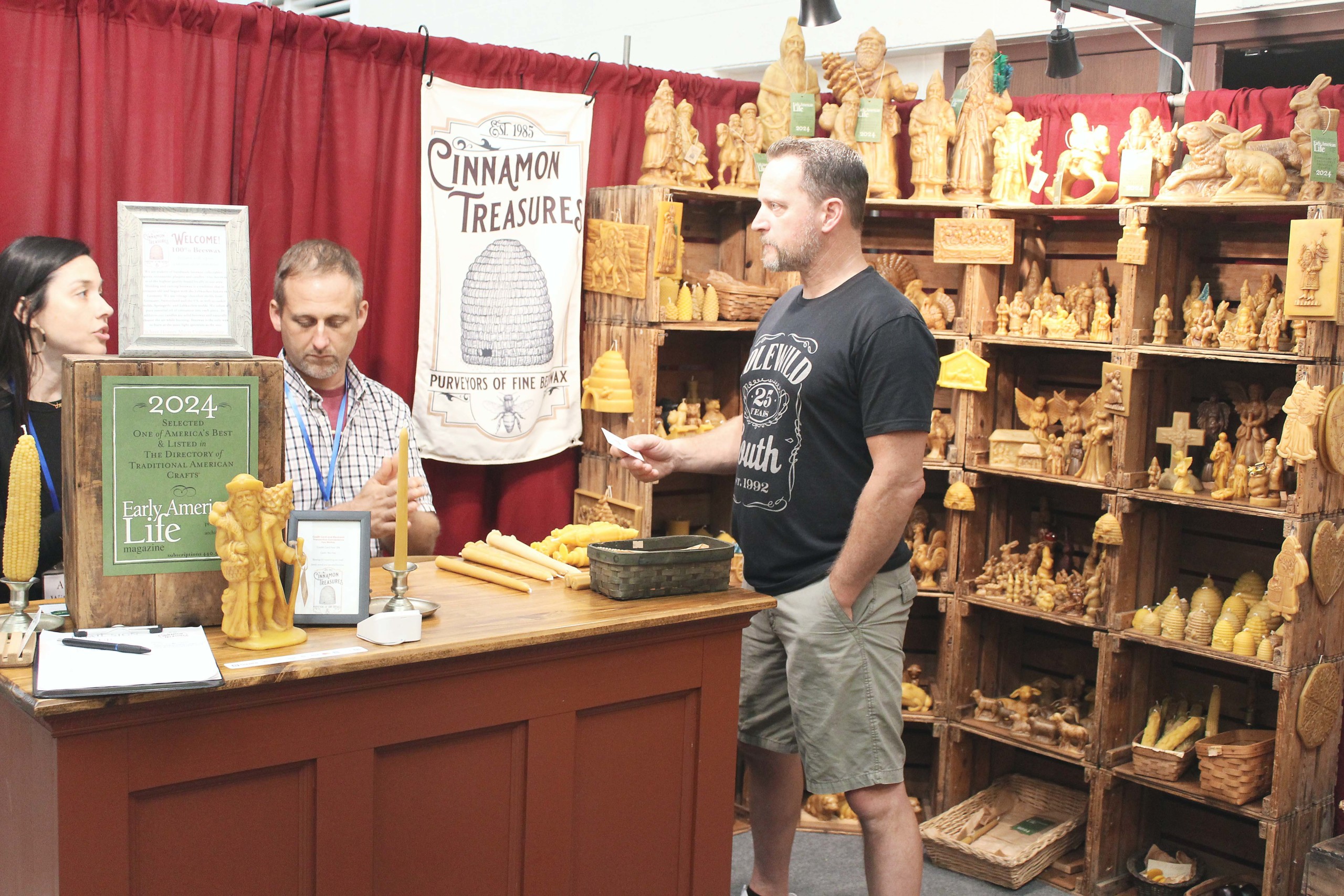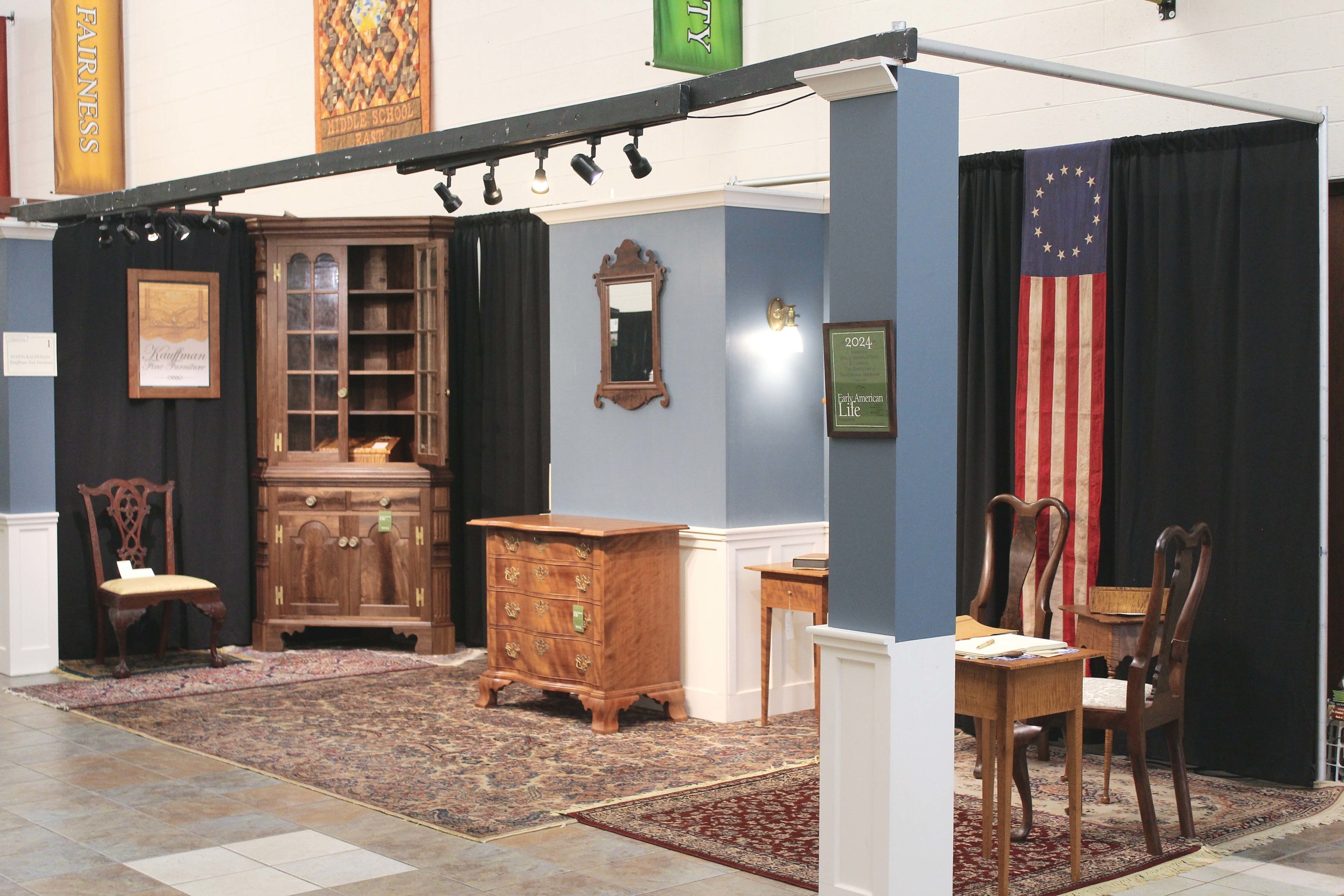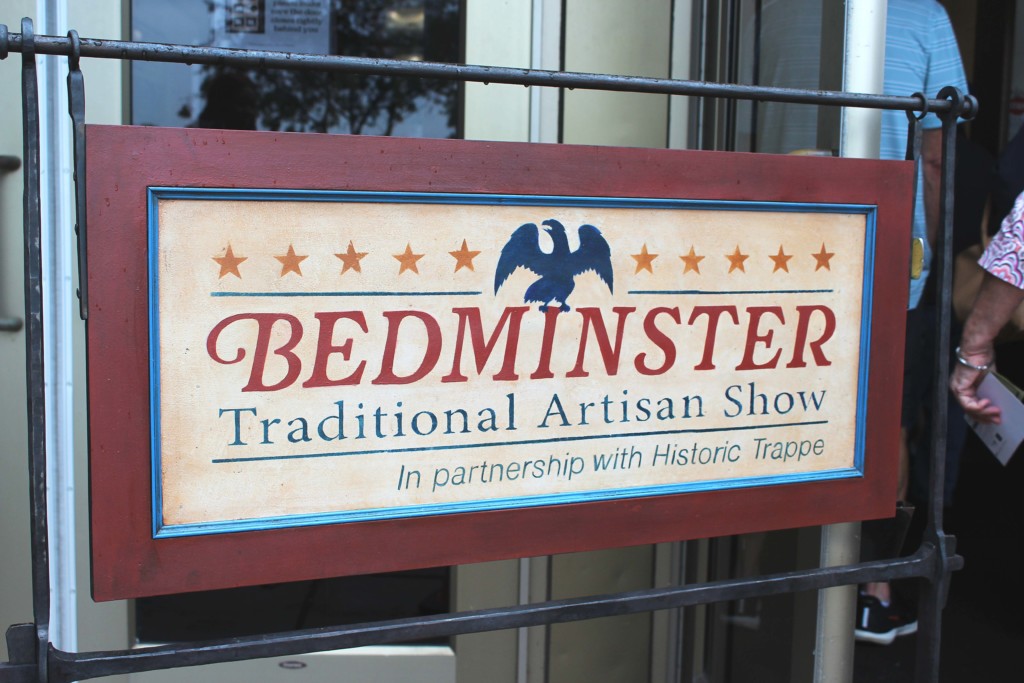
The Bedminster Traditional Artisan Show welcomed more than 600 attendees through the main entrance over the course of the two-day show, spanning August 17-18.
Review & Onsite Photos by Kiersten Busch
COLLEGEVILLE, PENN. — Despite the dreary drizzle taunting attendees as they lined up in front of the doors of Perkiomen Valley Middle School East, there were nothing but smiles and anticipatory conversations going on before the start of the Bedminster Traditional Artisan Show. In partnership with Historic Trappe — a non-profit with a mission to preserve and share historic places, landscapes and heritage of southeastern Pennsylvania — the show has moved to Collegeville, just down the street from Historic Trappe’s Center for Pennsylvania German Studies and Muhlenberg House; free tours of each were included with the price of admission.
Within the middle school’s gymnasium, with a few booths overflowing into the entrance hallway, The Bedminster Traditional Artisan Show hosted more than 40 of the country’s finest artisans working in traditional Americana and folk art. Offerings included furniture, paintings, quilts, hooked rugs, pottery, baskets and woodcarvings, among other handcrafted disciplines.
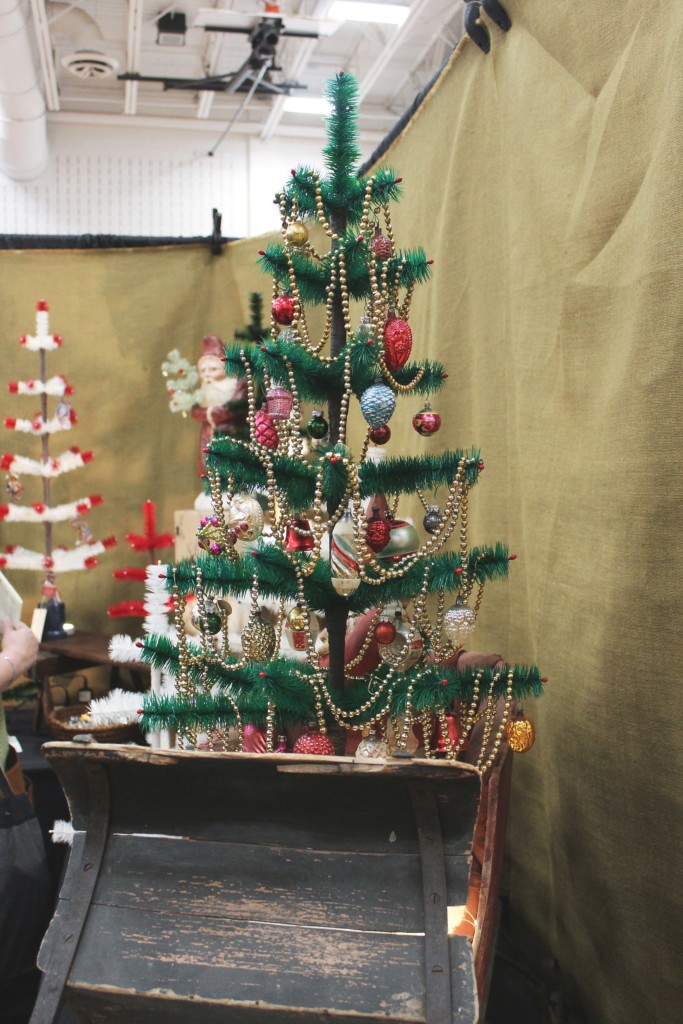
Simply Olde, Lancaster, Penn.
“Our museums have never been busier other than at Christmas!” exclaimed Lisa Minardi, executive director of Historic Trappe, in an email she sent Antiques and The Arts Weekly after the show’s conclusion. “Show admission included free entrance to our three museums, and nearly 50 percent of showgoers took advantage of this. It was wonderful to see so many people converge in the Trappe area for the show and I was just delighted with the results.”
Historic Trappe had its own display just past the ticketing booth in the main entrance hallway, advertising their museums and selling plates by Selinda Kennedy (Kennedy Redware, Muncy, Penn., who had a booth in the show) ornaments, mug mats, notecards and lanterns by other local artisans. Also available were exhibition catalogs and other relevant literature about the art and culture of southeastern Pennsylvania.
Lynn Hazelton, Hooked by Lynn, Fairpoint, N.Y., was working on a commissioned hooked rug when we approached her booth. She paused what she was doing to explain, “This is a Tree of Life design, which I’ve done before in a different size. This woman [the commissioner] has bought other rugs from me, and she personally requested this piece for a thinner location, 39 inches tall and 49 inches wide. It’s been a challenge shrinking and narrowing the design!” Hazelton beamed with excitement as she described her process, which takes about a month to complete for a rug that big. “I hook every day,” she explained. Her favorite pieces in the booth were a series of vegetable designs she had hooked and hung in wooden frames crafted by her husband, which she assured, “can go in the most modern house.”
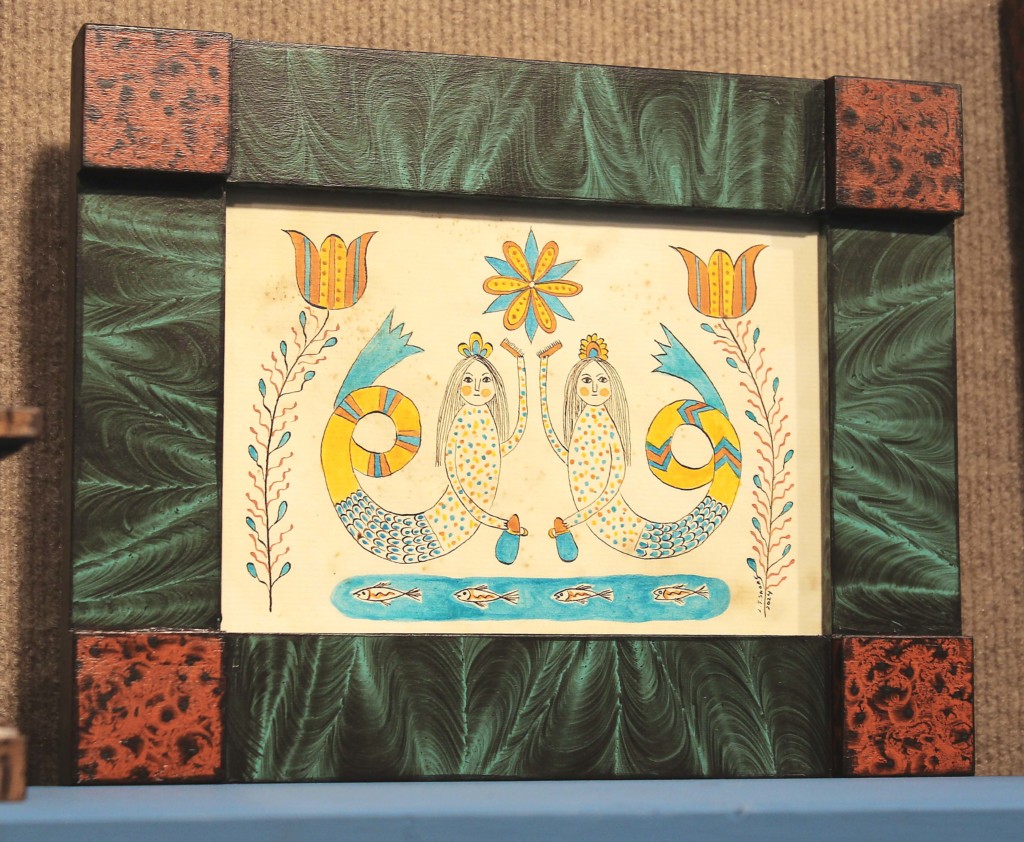
“I love the mermaids,” said Lisa Short, LT Short Folk Art, North Wales, Penn., about this pen, ink and watercolor mermaid fraktur, which was based on an example sold by Pook & Pook for more than $10,000. “Mine’s maybe a bit more cutesy,” she joked of her reproduction.
“I like this show because it’s all traditional; we lift each other up,” said Lisa Short, LT Short Folk Art, North Wales, Penn., a self-taught reproduction artist and on-and-off attendee of the Bedminster show who specializes in Pennsylvania German Fraktur. She was also enthusiastic about Antiques and The Arts Weekly; “I get ideas from your auction reviews!” she expressed. Short often looks to auction catalogs or show reviews from publications like Antiques and The Arts and others for Fraktur pieces to replicate and put her own twist on. “I try to be as authentic and ‘antique’ as I can,” she explained. Her works are completed in pen, ink and watercolor, and she grains and paints all the wooden frames her artwork is housed in using a Pennsylvania German technique from the Eighteenth or early Nineteenth Century.
It felt like walking into an old country store entering the booth of Karen Wychock, Times Gone By, Warrington, Penn. She sat behind a mock storefront she’s had for 40 years crafting Moravian stars, which she sold for $10-$12 in her booth; in between she spoke with interested customers, of which there were many. Wychock was also surrounded by a multitude of Shaker-inspired baskets in every size imaginable, from miniature — her favorite to create — to large cheese baskets. She’s been crafting Shaker reproductions for 45 years and attending the Bedminster show for over a decade. “I was an art teacher, and I always loved weaving,” she explained, when we asked what inspired her artistic journey. “I eventually apprenticed with a New Hampshire basket weaver. I love both the woodworking and weaving aspect; I’m a natural.”
We were transported to Christmastime in the booth of Donna DelCollo of Simply Olde, Lancaster, Penn. It was her first time at the show, where she offered feather trees, vintage Christmas primitives and other unique decorative items. “The trees come from goose biot feathers. You wrap them around a wire and [the feather] opens up,” DelCollo explained, demonstrating the technique with a small wire and feather. “It was started by Germans in the late 1800s, and then during President Roosevelt’s time in office it went through a resurgence. It was the first artificial Christmas tree.” DelCollo didn’t just offer Christmas-themed trees, however. Also on display was what she coined as a “patriotic tree,” which was done in red and white feathers and was adorned with American themed ornaments.
Traditional goldsmith and silversmith, Jeffrey Jobe from Thomasville, N.C., specializes in hand forged and woven or braided metal; it takes him up to two and a half days to make his smallest chains. This was Jobe’s first Bedminster show, but he’s been doing shows for a few decades. He opened a studio for his business, Barking Dog, back in 1988, but even before that he’d been learning the trade. Jobe received an undergraduate degree in archaeology from the University of North Carolina Greensboro and went to graduate school, but didn’t finish. “While working on my degree, I was offered a chance to learn this. People thought I lost my ever-loving mind!” He joked when asked how he got his start. “I discovered I liked doing the art more than digging it up.”
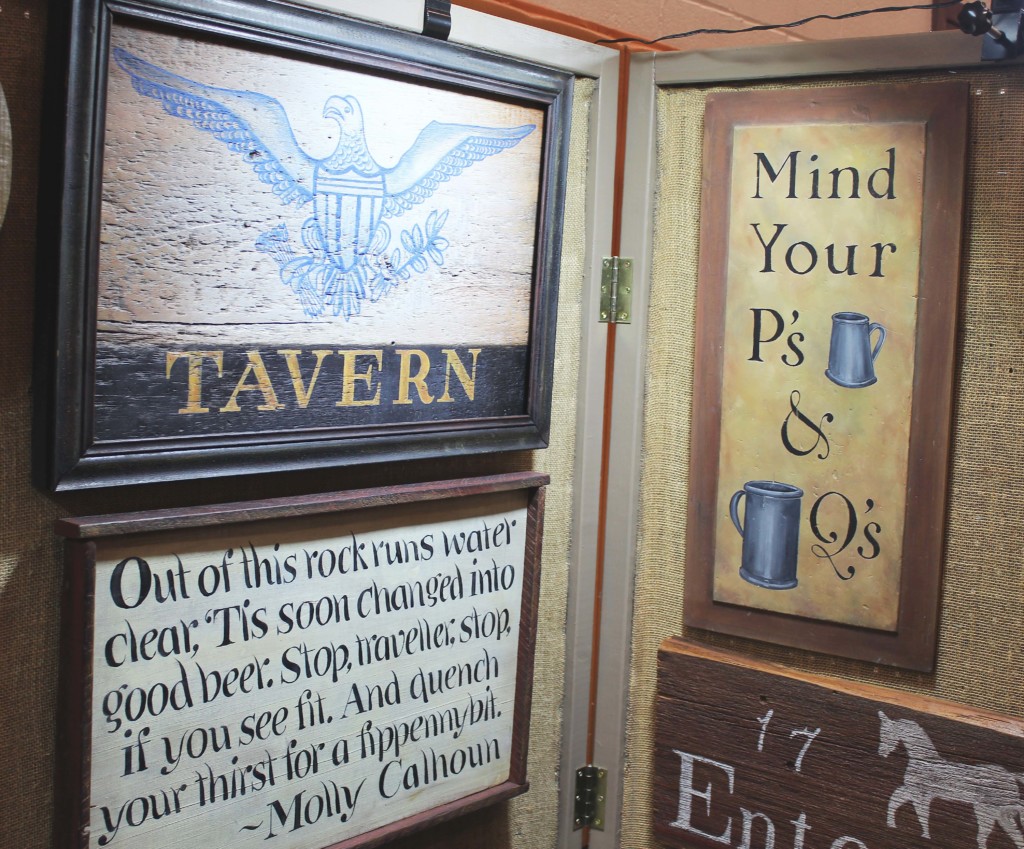
J. Foster Historic Signs, Fredericksburg, Va.
What has kept Jackson Foster, J. Foster Historic Signs, Fredericksburg, Va., coming back to Bedminster for five years? “Oh, the pizza!” he joked. All jokes aside, Foster explained that it’s because “this is one of the few real artisan shows.” In front of each of his hand-painted signs was an explanation of its historical context; Foster said that he does extensive research before each piece he works on. Bigger signs — like his examples modeled after designs that allies of the Sons of Liberty would have made — are painted with a water-soluble oil paint and take him around a month to complete, combining both fabrication and painting skills. “My inspiration is the research I do,” Foster explained. “Even the lettering styles I use, I refer to printer manuals for. Most old lettering styles are from London, but many artisans were untrained, and did their own typestyles.”
Laurel Dabbs from Westfield Center, Ohio, was celebrating her first year at Bedminster, but she’s been carving and selling decoys and birds for 37 years under the name Laurel Dabbs Decoys and Folk Art. She has also been a subscriber to Antiques and The Arts Weekly for all but seven of those years. While she had many examples of ducks, herons and some flashy red cardinals, Dabbs shared that her favorite birds in the booth were a group of shorebirds, which she labeled “folky peep.” Dabbs learned the trade from a family who has been carving decoys for generations, which she expressed her gratitude for. When we asked her what got her interested in carving, she explained, “I just thought it was neat to make a product, start to finish, with only hand tools.”
We were immediately drawn to the booth of Andrea Durnell, Andrea Durnell Folk Art, Baden, Penn., which was full of anthropomorphic animal dolls made from carved wood, oil paint and preserved Nineteenth Century fabrics. “The storytelling aspect is the most important,” she explained happily, “The dolls are based on countries I’ve lived in and people I know… but I don’t tell them!” Durnell shared with us that the concept behind her dolls was based on Public and Private Life of Animals (1877, London: S. Low, Marston, Searle & Rivington), which features whimsical animal illustrations by French caricaturist J.J. Grandville. Each doll takes around 50 to 60 hours for her to complete, including hunting down materials and preparing with research. “I don’t want them to become too cute,” Durnell added, “I want them to be a little more serious.”
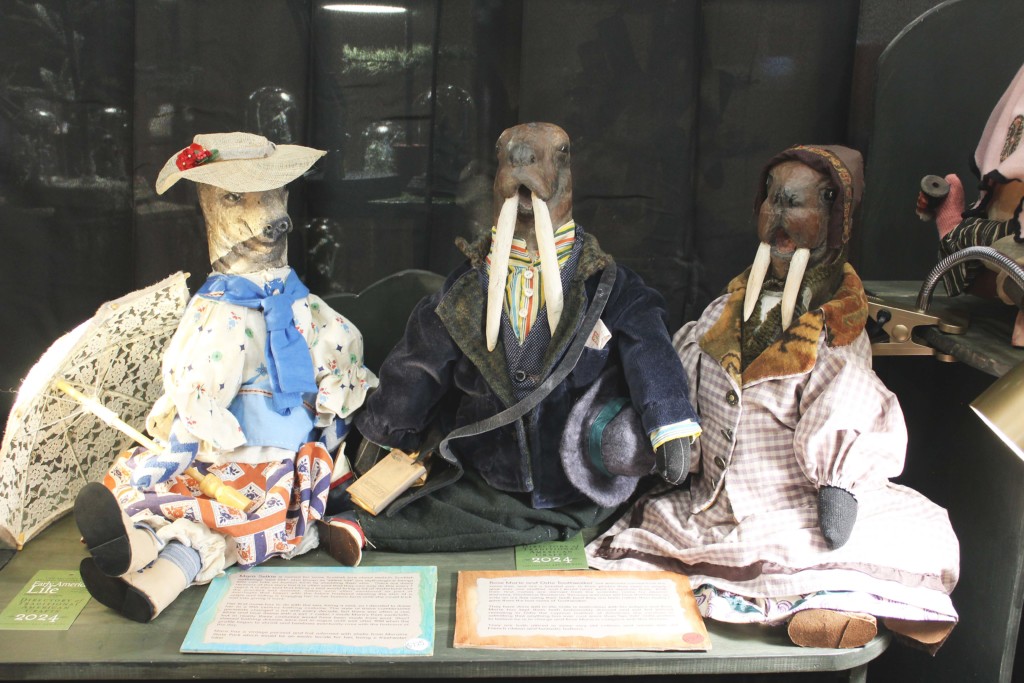
Mara Selkie (left), a seal, and Rose Marie and Odie Toothwalker, a bonded pair of walruses, were adorned with repurposed vintage fabrics and were hand-carved and painted from logs by Andrea Durnell, Andrea Durnell Folk Art, Baden, Penn.
“I paint, pick and press all of my own flowers, and I grow all of the flowers myself, mostly,” shared Lucille Norella, a pressed flower artist from Waymart, Penn., who operates under the name Art by Lucille Norella. Looking like a fresh spring garden, Norella’s booth was decorated head to toe with her pressed flower artwork, which included framed flowers, vases, jewelry and her newest challenge, pressed flower windowpanes. “I like the diversification of doing different things. The vases were the challenge, but I loved them. I love a challenge.” When asked what her favorite form of pressed flower artwork was, she explained that the windows took the cake; they were both popular and decorative.
One of the last booths we stopped at for the day was one of the first to examine after entering the show, and it had been bustling and busy all day. Cinnamon Treasures, Pine Grove, Penn., owned by Joe and Amy Winter, sold a vast array of hand-carved beeswax sculptures, smalls and ornaments, along with candles, all made from locally sourced beeswax. While the business was founded in 1985, the Winters purchased it in 2020; they had been fans of the business and avid collectors of their work before the purchase. This was their second year in Bedminster, and Amy shared, “We have loved the interest in the historic piece of our business, the story behind how it’s made.” She also cited making connections with Historic Trappe and early American historical enthusiasts as a major advantage. When asked what her favorite pieces in the booth were, Amy pointed out “Max,” a Santa sculpture made from a vintage late 1700s window display chocolate mold, and a large running rabbit affectionately known as “Stu,” made from a rare chocolate mold, one of only two known in the world.
“How did the show go? In a word — terrific!” Shared Minardi in a follow-up email after the conclusion of the show. “We had over 600 people attend — a 33 percent increase over last year. Many were long-time showgoers, but many were also new to the show. I also saw many younger folks, including families with children, in attendance… I saw so many packages heading out the door — from Windsor chairs to hooked rugs to feather trees to trade signs and everything in between. There was a reproduction Mahantongo Valley chest of drawers that sold early on Saturday. I spoke with many of the artisans throughout and at the end of the show, and they were all very pleased with both the attendance and the sales. Some reported having their best show ever or their best in a long while.”
A date has not yet been announced for the 2025 Bedminster Traditional Artisan Show.
For more information, www.traditionalartisanshow.com.

